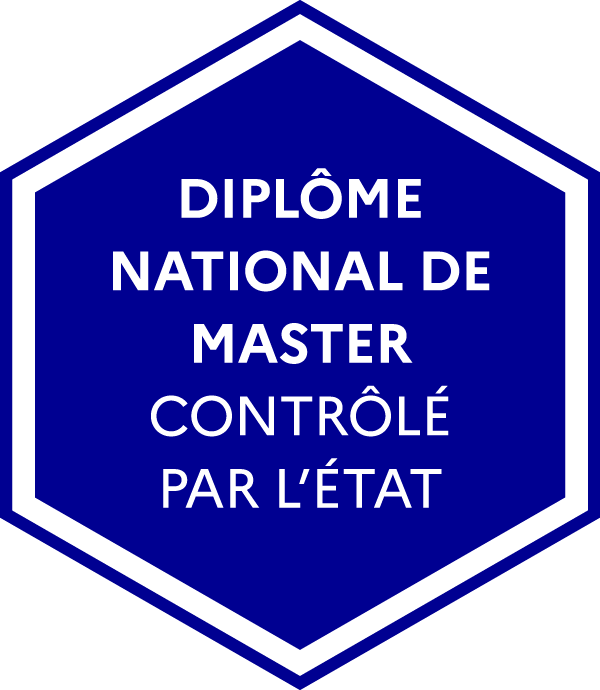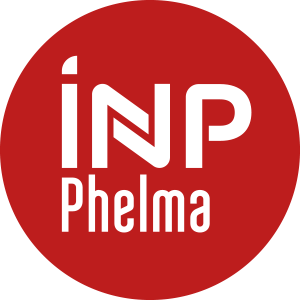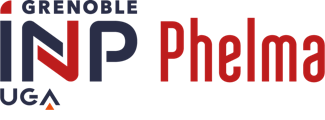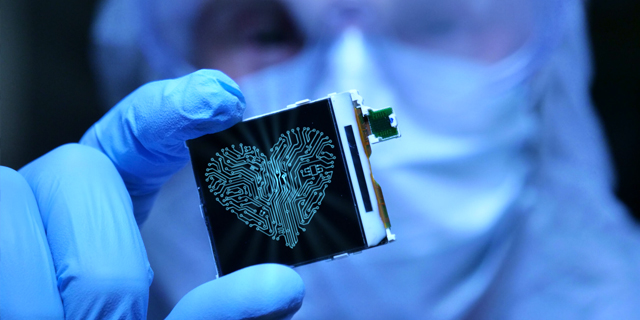Présentation
Master
Diplôme national- Grade Master
- Mention
- Nanosciences - Nanotechnologies
-
Ville
- GRENOBLE Presqu'île
- Durée 2 ans
-
Accessible en
- Formation initiale
- Formation continue
Résumé
This Master is entirely taught in english.
This track is devoted to the new technologies in medical imaging involving nano- or molecular markers, as well as the therapeutic use of nano-particules. Taught courses include general biology courses mainly directed at students joining the program in the second year. It also includes a number of courses dealing with the various methods of medical imaging from magnetic resonance to X-rays, image processing issues, nano- and molecular markers, and courses in structural biology.
This track is devoted to the new technologies in medical imaging involving nano- or molecular markers, as well as the therapeutic use of nano-particules. Taught courses include general biology courses mainly directed at students joining the program in the second year. It also includes a number of courses dealing with the various methods of medical imaging from magnetic resonance to X-rays, image processing issues, nano- and molecular markers, and courses in structural biology.
Objectifs
This track aims to prepare students for the challenges and innovations that are emerging at the border medicine nanoscience, including exploiting nanotechnology and nanomaterials for medical imaging and therapeutics. It also aims to train students to research in structural biology, a strong pole in Grenoble environment with the presence of large instruments and the European Molecular Biology Laboratory EMBL.
-
Formation en collaboration avec
Laboratoires
LIPhy, CEA-LETI-DTBS, GIPSA-Lab, LMGP, GIN, IBS, ESRF, EMBL.Autre(s) établissement(s) délivrant le diplômeCo-accréditation : Université Grenoble Alpes
Admission
- Niveau(x) de recrutement Bac + 4, Bac + 3, Bac + 5
- Formation(s) requise(s)
- M2: Basics in molecular and cellular biology, in physics of semi-conductors, in NMR, in optics and electromagnetism are required. Also, the candidate should prove sufficient english level (CEFR (B2), TOEFL (IBT 87-109), IELTS (5.5-6.5), TOEIC (785-945) or equivalent).
- Engineer/Master Dual Degree accessible to Phelma Engineering degree students who have validated the 2nd year of Biomedical Engineering field of study.
- M2: Basics in molecular and cellular biology, in physics of semi-conductors, in NMR, in optics and electromagnetism are required. Also, the candidate should prove sufficient english level (CEFR (B2), TOEFL (IBT 87-109), IELTS (5.5-6.5), TOEIC (785-945) or equivalent).
-
Accessible en :
- Formation initiale
- Formation continue
Inscription
Contacts
Renseignements
Secrétariat : recrutement-masters@phelma.grenoble-inp.fr
Programme
- Durée des études 2 ans
- Stage obligatoire
Programme
M1
Parcours dispensé entièrement en langue Anglaise.
M2
Parcours dispensé entièrement en langue Anglaise.
Débouchés
Débouchés professionnels
Healthcare and biomedical research.
Research & development, design and innovation in imaging technics for medicine, implementation of the imaging means, analysis of the structure of the living systems.

contacts
Teacher responsible for Master 1
Charlotte VENDRELY
Secretary for Master 1
Laurence BOISLIVEAU
Teacher responsible for Master 2
Davide BUCCI
Secretary for Master 2
Laurence BOISLIVEAU
+33 (0)4 56 52 92 18
Charlotte VENDRELY
Secretary for Master 1
Laurence BOISLIVEAU
Teacher responsible for Master 2
Davide BUCCI
Secretary for Master 2
Laurence BOISLIVEAU
+33 (0)4 56 52 92 18



